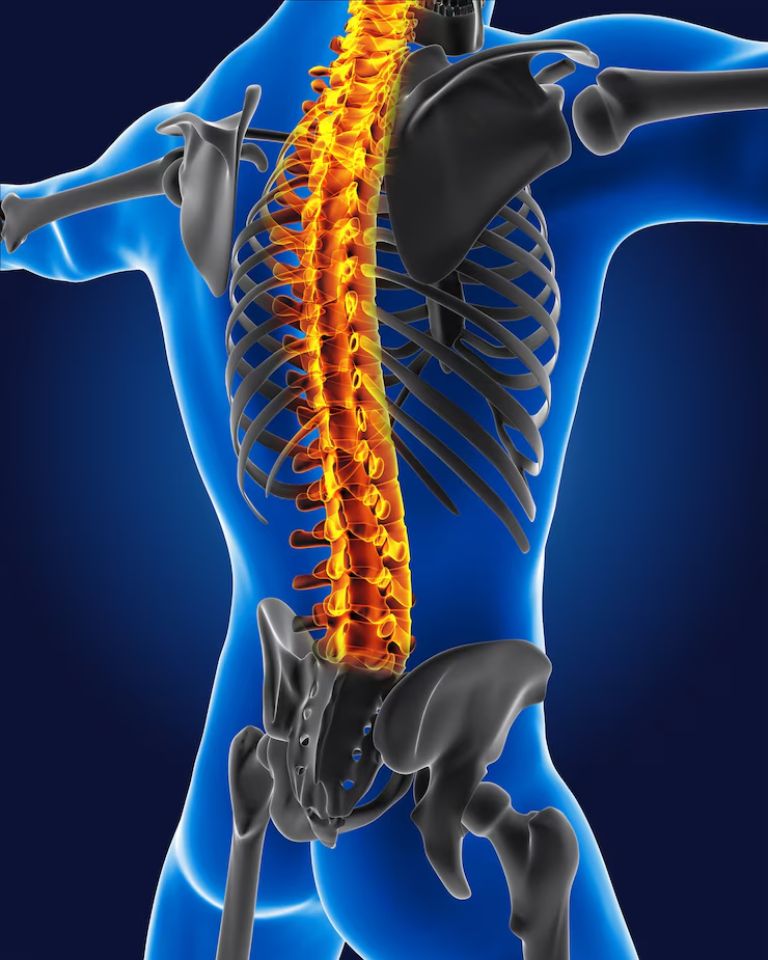
Endoscopic Spine Surgery represents a significant advancement in the field of spinal surgery, offering minimally invasive techniques that allow for precise visualization and treatment of spinal disorders. Unlike traditional open surgery, which requires larger incisions and extensive muscle dissection, endoscopic procedures utilize specialized instruments and advanced imaging technologies to access and treat the spine through small incisions.
Overview of Endoscopic Spine Surgery:
Endoscopic spine surgery involves the use of an endoscope—a thin, flexible tube equipped with a camera and light source—that is inserted through a small incision in the skin. This allows surgeons to visualize the spinal structures in detail, including the vertebrae, discs, nerves, and surrounding tissues, without the need for extensive tissue disruption. The images captured by the endoscope are displayed on a monitor in the operating room, providing real-time visualization and guidance throughout the procedure.
Endoscopic spine surgery is a minimally invasive surgical approach used to diagnose and treat spinal conditions through small incisions, typically less than one centimeter in size. Unlike traditional open spine surgery that requires larger incisions and significant muscle dissection, endoscopic techniques utilize specialized instruments and an endoscope—a thin, flexible tube equipped with a camera and light source—to access the spine.
The endoscope is inserted through the small incision and navigated to the affected area of the spine. The camera attached to the endoscope allows surgeons to visualize the internal structures of the spine, including the vertebrae, discs, nerves, and surrounding tissues, on a monitor in real-time. This high-definition imaging enables precise navigation and treatment of spinal disorders with minimal disruption to surrounding muscles and tissues.
Discectomy: Endoscopic discectomy is commonly performed to treat herniated discs in the spine. The procedure involves removing the portion of the herniated disc that is pressing on a nerve root or the spinal cord. By accessing the disc through a small incision, surgeons can minimize damage to surrounding muscles and tissues, leading to faster recovery times and reduced postoperative pain.
Foraminotomy: This procedure is used to relieve pressure on spinal nerves that may be compressed as they exit the spinal canal through small openings called neural foramina. Endoscopic foraminotomy involves enlarging these openings to alleviate nerve compression, often caused by conditions such as foraminal stenosis or herniated discs.
Laminectomy: Endoscopic laminectomy is performed to remove part of the lamina—the bony arch of the vertebra—to relieve pressure on the spinal cord or nerve roots. This procedure is used to treat spinal conditions such as spinal stenosis, where narrowing of the spinal canal puts pressure on the spinal cord and nerves.
Spinal Fusion: Although less common than other endoscopic procedures, some spinal fusion techniques can be performed endoscopically. This involves using bone grafts, screws, and rods to stabilize the spine and promote fusion between two or more vertebrae. Endoscopic spinal fusion aims to achieve similar outcomes as traditional open fusion surgery with reduced tissue damage and faster recovery.
Advantages of Endoscopic Spine Surgery:
Minimally Invasive: Endoscopic techniques require smaller incisions compared to traditional open surgery, resulting in less damage to muscles, ligaments, and other soft tissues. This can lead to reduced postoperative pain and faster recovery times.
Preservation of Spinal Stability: Unlike traditional approaches that may involve extensive muscle dissection, endoscopic surgery allows for targeted treatment of spinal disorders while preserving spinal stability and function.
Reduced Risk of Complications: Smaller incisions and less tissue disruption in endoscopic spine surgery can contribute to a lower risk of complications such as infection, excessive bleeding, and postoperative scarring.
Improved Cosmesis: The smaller incisions used in endoscopic procedures often result in minimal scarring and improved cosmetic outcomes compared to larger incisions required in open surgery.
Patient Selection and Considerations:
Not all spinal conditions or patients are suitable candidates for endoscopic spine surgery. The decision to undergo this type of surgery is based on factors such as the specific spinal condition, location of the problem within the spine, overall health of the patient, and previous treatments or surgeries. A thorough evaluation by a spine specialist is essential to determine the most appropriate treatment approach for each individual.
Recovery and Rehabilitation:
Recovery from endoscopic spine surgery varies depending on the type and complexity of the procedure performed, as well as individual factors such as age and overall health. In general, patients may experience less postoperative pain and shorter hospital stays compared to traditional open surgery. Physical therapy and rehabilitation exercises may be recommended to help restore strength, flexibility, and function in the spine and surrounding muscles.

Endoscopic spine procedures are minimally invasive surgeries used to diagnose and treat various spinal conditions. Unlike traditional open surgeries, they involve smaller incisions and specialized tools, including an endoscope—a thin, flexible tube with a camera and light—that allows surgeons to visualize and access the spine. Here’s a detailed look at the symptoms and causes associated with endoscopic spine procedures:
Back Pain: Persistent or severe back pain, often localized to specific areas of the spine, can be a symptom addressed by endoscopic spine procedures. This pain may be exacerbated by movement or certain positions.
Leg Pain (Sciatica): Radiating pain that travels down the leg(s), commonly known as sciatica, can be caused by conditions such as herniated discs or spinal stenosis. Endoscopic procedures can relieve pressure on affected nerves, alleviating leg pain.
Numbness or Tingling: Sensory symptoms like numbness, tingling, or weakness in the legs or arms may indicate nerve compression in the spine. Endoscopic surgery aims to decompress nerves and restore normal function.
Muscle Weakness: Weakness in specific muscle groups controlled by nerves originating from the spine can be a sign of nerve compression or damage, often addressed through surgical intervention.
Herniated Discs: Discs between vertebrae can bulge or rupture, pressing on spinal nerves and causing pain, numbness, or weakness. Endoscopic discectomy removes or reduces the herniated portion of the disc, relieving pressure on nerves.
Spinal Stenosis: Narrowing of the spinal canal or neural foramina (openings through which nerves exit the spine) can compress spinal nerves or the spinal cord itself. Endoscopic procedures like laminectomy or foraminotomy aim to widen these spaces and alleviate pressure.
Degenerative Disc Disease: Wear and tear or age-related changes in spinal discs can lead to loss of disc height, instability, and nerve compression. Endoscopic procedures can address disc degeneration and associated symptoms.
Facet Joint Disease: Degeneration or inflammation of facet joints (small joints between vertebrae) can cause back pain and limited spinal mobility. Endoscopic techniques can be used to diagnose and treat facet joint-related pain.
Spinal Tumors: Benign or malignant tumors in the spine can compress nerves or the spinal cord, leading to neurological symptoms. Endoscopic procedures may be used for biopsy or tumor removal in selected cases.
Spinal fractures represent a significant medical concern due to their potential to cause severe pain, mobility issues, and neurological complications. Understanding the diverse causes, symptoms, and types of spinal fractures is essential for effective diagnosis and treatment. While minor fractures may heal with conservative care, more severe cases often require specialized intervention to prevent long-term complications and restore function. It is crucial to seek timely medical attention to ensure proper management and recovery.
For residents in Indore experiencing symptoms of spinal fractures or seeking expert evaluation and treatment, consulting a qualified neurosurgeon can provide advanced care tailored to individual needs. A neurosurgeon in Indore can offer comprehensive assessments, precise diagnostics, and a range of treatment options, including surgical interventions if necessary, to address spinal fractures and related conditions effectively. If you suspect a spinal fracture or need expert advice, reaching out to a skilled neurosurgeon in Indore can be a pivotal step toward achieving optimal outcomes and improving quality of life.